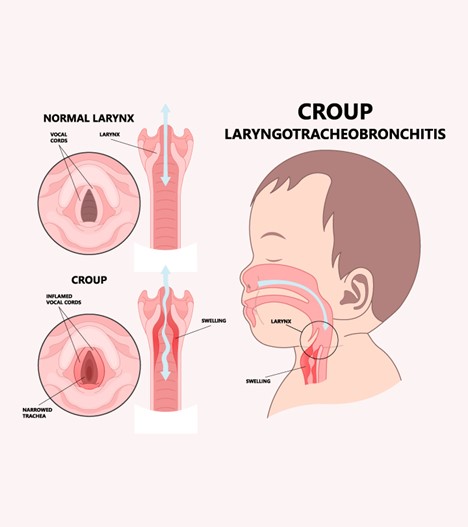Which structural defects constitute tetralogy of Fallot?
Pulmonic stenosis, ventricular septal defect, aortic hypertrophy, left ventricular hypertrophy.
Pulmonic stenosis, ventricular septal defect, overriding aorta, right ventricular hypertrophy.
Aortic stenosis, ventricular septal defect, overriding aorta, right ventricular hypertrophy.
Aortic stenosis, atrial septal defect, overriding aorta, left ventricular hypertrophy.
The Correct Answer is B
The correct answer is choice B: Pulmonic stenosis, ventricular septal defect, overriding aorta, right ventricular hypertrophy.
Choice A rationale:
Pulmonic stenosis, ventricular septal defect, aortic hypertrophy, left ventricular hypertrophy. This choice is incorrect because it includes "aortic hypertrophy" and "left ventricular hypertrophy," which are not components of the tetralogy of Fallot. Aortic hypertrophy is not a recognized structural defect in tetralogy of Fallot, and left ventricular hypertrophy is not a characteristic feature of this congenital heart condition.
Choice B rationale:
Pulmonic stenosis, ventricular septal defect, overriding aorta, right ventricular hypertrophy. This is the correct choice. Tetralogy of Fallot is characterized by four specific structural defects: pulmonic stenosis (narrowing of the pulmonary valve), ventricular septal defect (hole between the right and left ventricles), overriding aorta (aorta positioned over the ventricular septal defect, receiving blood from both ventricles), and right ventricular hypertrophy (enlargement of the right ventricle due to increased workload).
Choice C rationale:
Aortic stenosis, ventricular septal defect, overriding aorta, right ventricular hypertrophy. This choice is incorrect because it includes "aortic stenosis," which is not part of the tetralogy of Fallot. In tetralogy of Fallot, the stenosis occurs at the pulmonary valve, not the aortic valve.
Choice D rationale:
Aortic stenosis, atrial septal defect, overriding aorta, left ventricular hypertrophy. This choice is incorrect. While "overriding aorta" is present in tetralogy of Fallot, "atrial septal defect" and "left ventricular hypertrophy" are not part of this condition. Atrial septal defects involve a hole between the two atria, not the ventricles, and left ventricular hypertrophy is not typically seen in tetralogy of Fallot.
Nursing Test Bank
Naxlex Comprehensive Predictor Exams
Related Questions
Correct Answer is A
Explanation
Choice A rationale:
Increased appetite is a common side effect of corticosteroid therapy. Corticosteroids are known to affect various metabolic processes, and one of the effects is an increase in appetite. This can lead to weight gain, especially when the increased calorie intake is not balanced by physical activity.
Choice B rationale:
Fever is not a typical side effect of corticosteroid therapy. Corticosteroids are often used to reduce inflammation and suppress the immune response, which can help in managing conditions like autoimmune diseases, allergies, and inflammatory disorders. Fever is not a direct result of corticosteroid administration.
Choice C rationale:
Weight loss is not a common side effect of corticosteroid therapy. In fact, corticosteroids are more likely to cause weight gain due to their influence on appetite, metabolism, and fluid retention.
Choice D rationale:
Hypertension (high blood pressure) can indeed be a side effect of corticosteroid therapy. Corticosteroids can lead to sodium and water retention, which can contribute to increased blood pressure, particularly in individuals who are already at risk for hypertension. However, among the options provided, increased appetite is a more directly associated side effect of corticosteroid therapy.
Correct Answer is B
Explanation
The correct answer is choice B. It has a harsh, barky cough.
Choice A rationale:
Spasmodic croup is characterized by sudden-onset symptoms, including a barking cough, but it is not typically associated with a high fever. The barky cough is caused by inflammation and narrowing of the upper airways, leading to a distinct sound when the child coughs.
Choice B rationale:
A harsh, barky cough is a hallmark symptom of spasmodic croup. It is caused by the swelling of the vocal cords and the upper airway, resulting in the characteristic sound. This type of croup is often triggered by viral infections and is usually not bacterial in nature.
Choice C rationale:
Spasmodic croup is usually of viral origin rather than bacterial. Bacterial infections may lead to other respiratory conditions, but they are not a distinguishing feature of spasmodic croup.

Choice D rationale:
Wheezing is not a typical manifestation of spasmodic croup. Wheezing is often associated with lower airway conditions such as asthma, while croup primarily affects the upper airways and vocal cords, leading to the barking cough.
Whether you are a student looking to ace your exams or a practicing nurse seeking to enhance your expertise , our nursing education contents will empower you with the confidence and competence to make a difference in the lives of patients and become a respected leader in the healthcare field.
Visit Naxlex, invest in your future and unlock endless possibilities with our unparalleled nursing education contents today
Report Wrong Answer on the Current Question
Do you disagree with the answer? If yes, what is your expected answer? Explain.
Kindly be descriptive with the issue you are facing.
